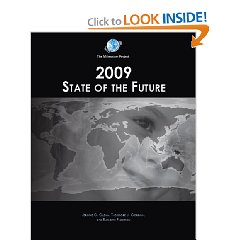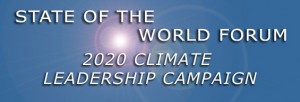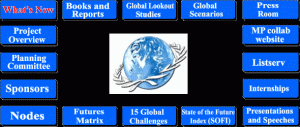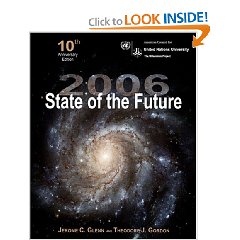Jerome C. Glenn and Theodore J. Gordon
I have been much taken with the integrity and wisdom of the Honorable David Walker, Comptroller General of the United States, who has been telling Congress that they are not providing for the future and that today's budget is inconsistent with sustainable national security and enduring national prosperity. He is right. This is the book he should buy and give to every Senator and every Representative, along with E. O. Wilson's “The Future of Life” and J. F. Richard's “HIGH NOON: 20 Global Problems, 20 Years to Solve Them.”
The book is actually in two pieces. 129 black and white pages that is comprised of an Executive Summary, a section on Global Challenges, a State of the Future Index, 40 pages on four global energy scenarios, a separate chapter on emerging environmental security issues (see my review of Max Manwaring's “Environmental Security and Global Stability”), and a final chapter on reflections as the project achieves its tenth anniversary.
The printed book also includes a table of contents for the CD-ROM of 5,400 pages with color graphics and global maps that are quite good, and the publishers are to be complemented for providing the CD material in both PDF form and Document form, the latter for ease of extraction of pictures and text for repurposing.
As I get ready to publish a book by Thomas J. Buckholtz entitled “INFORMATION METRICS: The GIST (Gain Impact, Save Time) of Successful Intelligence,” I cannot help but admire the manner in which the authors have leveraged the measurement of political, social, economic, and other indicators of quality and sustainability, a process that was first pioneered by Professors Banks and Textor in the 1970's.
The day will come when this book and the CD are available in a Serious Game that is both receiving near-real-time information feeds from all open sources in all languages, AND is connected to the real-world budgets of all governments and non-governmental organizations and private sector parties so that any individual can type in their zip code and their issue, and see the color-coded “threat condition” corresponding to whether or not their level of government or their organization is spending wisely, what I call “reality-based budgeting.”
The authors have done a superb job of documenting reality, and as I went through the book, I could not help but feel that we need a second book that evaluated national-level budgets in detail, to publicize the erroneous trade-offs that are being made without the public's real understanding or approval–too much money for a heavy-metal military and corporate tax loopholes, not enough for a global educational Marshall Plan and free telecommunications for the five billion poor (easily affordable for the half trillion the USA has wasted on the elective invasion and sustained heavy-handed occupation of Iraq).
In brief, this book, the CD, this project, are a *cornerstone* for building our future. Worth every penny, and worth several hours of a good read and reflection.








